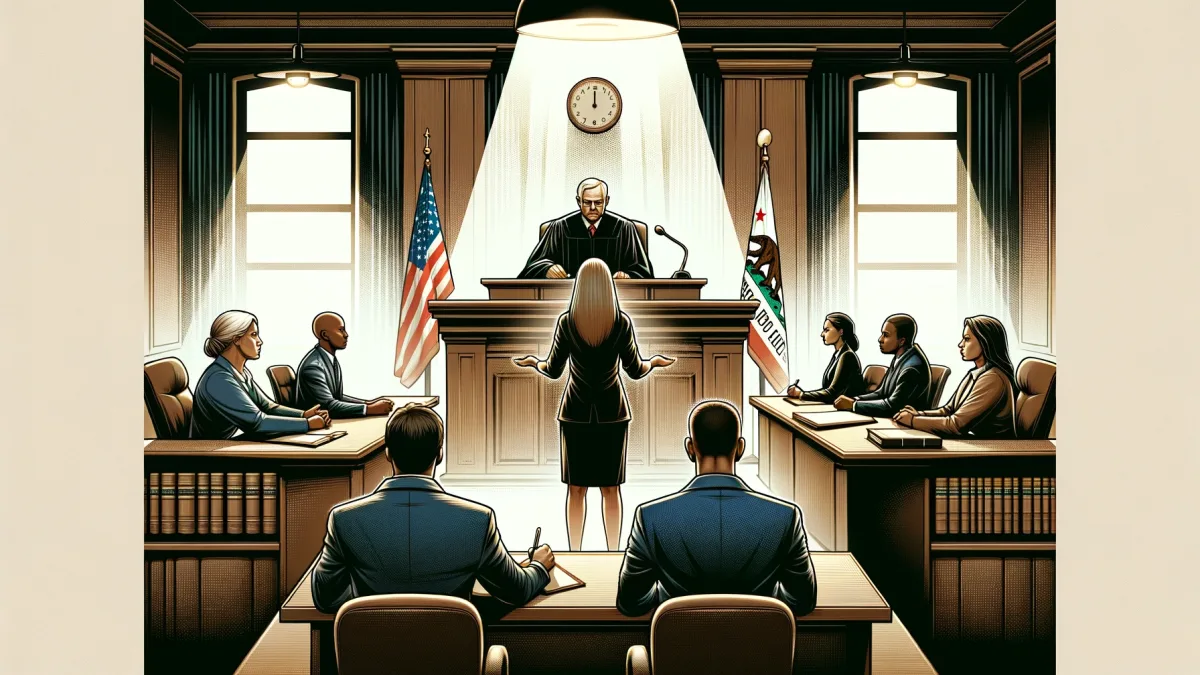In the Golden State, where the sun meets the sea and dreams take flight, the law also stands as a guardian for those seeking refuge from harassment, threats, or abuse. One of the legal system’s shields is the restraining order, a court-issued mandate designed to protect individuals from harm or harassment. If you find yourself in the position of either seeking a restraining order or defending against one in California, you’re likely wondering: What exactly happens at a restraining order hearing? Let’s walk through this process together, shedding light on the path that lies ahead in a restraining order hearing in California.
Understanding the Essence of a Restraining Order
First, it’s crucial to grasp what a restraining order is. In California, restraining orders are legal documents issued by a court to protect individuals from being physically or sexually abused, threatened, stalked, or harassed. There are several types of restraining orders, including domestic violence, civil harassment, elder or dependent adult abuse, and workplace violence restraining orders, each tailored to specific situations and relationships.
The Journey to a Hearing: Filing for a Restraining Order
The process begins when an individual (the petitioner) files a request for a restraining order at their local California court. This involves completing the necessary forms and detailing the reasons for seeking the order, including any incidents of abuse or harassment. The court may issue a temporary restraining order (TRO) to provide immediate protection, typically lasting until the date of the full court hearing for the permanent restraining order, usually within 21 days.
The Day of the Hearing: What to Expect
The restraining order hearing is a critical juncture where both the petitioner and the respondent (the person against whom the order is sought) have the opportunity to present their case before a judge. Here’s a breakdown of what to expect:
Preparation is Key
- Evidence: Both parties should come prepared with any evidence that supports their case. This might include text messages, emails, photos of injuries, police reports, or witness testimonies.
- Legal Representation: While individuals can represent themselves, many choose to hire an attorney to navigate the legal complexities and advocate on their behalf.
Inside the Courtroom
- Judge’s Introduction: The hearing will start with the judge explaining the purpose of the hearing and the order of proceedings.
- Presenting the Case: The petitioner will first present their case, followed by the respondent. Each party can make statements, present evidence, and call witnesses.
- Cross-Examination: There may be an opportunity for cross-examination, where each party can question the other’s evidence or witnesses.
- Judge’s Deliberation: After hearing both sides, the judge will deliberate and make a decision based on the evidence presented.
Possible Outcomes
- Issuance of a Permanent Restraining Order: If the judge rules in favor of the petitioner, a permanent restraining order may be issued, with specifics on distances to be kept and other conditions.
- Denial: If the judge does not find sufficient grounds for a restraining order, the petition will be denied, and any temporary restraining order previously issued will typically expire.
After the Hearing: The Path Forward
Should a permanent restraining order be issued, it’s essential for both parties to understand and adhere to the terms set by the court. Violating a restraining order can lead to criminal charges.
For the petitioner, it’s a time to leverage the protections afforded by the order, seeking peace and safety. For the respondent, respecting the order’s conditions is paramount, recognizing that compliance is not only a legal obligation but a step towards resolution.
Conclusion: A Beacon of Hope and Caution
Restraining order hearings in California serve as a critical mechanism for protecting individuals from harm while ensuring a fair process for those accused. Whether you’re seeking protection or defending against a restraining order, understanding what happens at these hearings is crucial.
Remember, the journey through a restraining order hearing is one navigated best with preparation, understanding, and, when possible, legal representation. In the quest for safety and justice, the law serves as both a shield and a guide, embodying the promise of protection for all Californians.









Leave a Reply